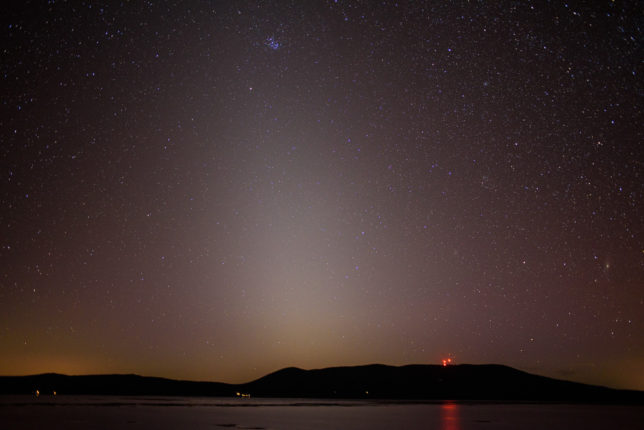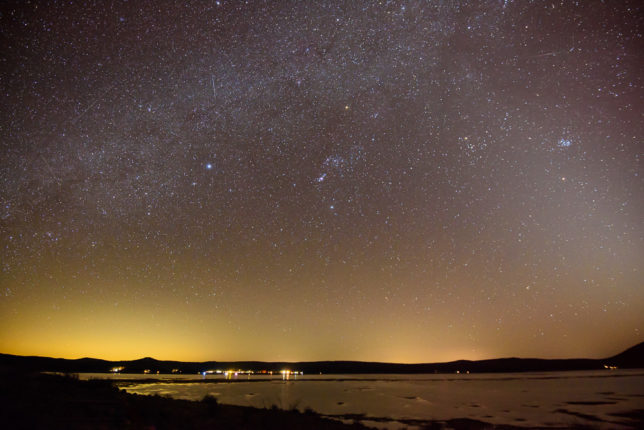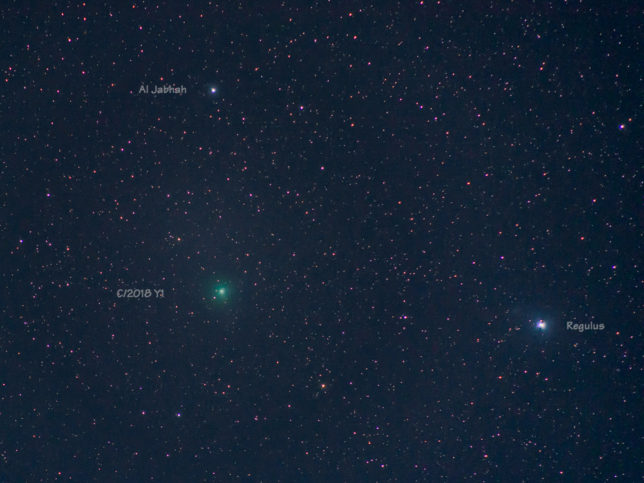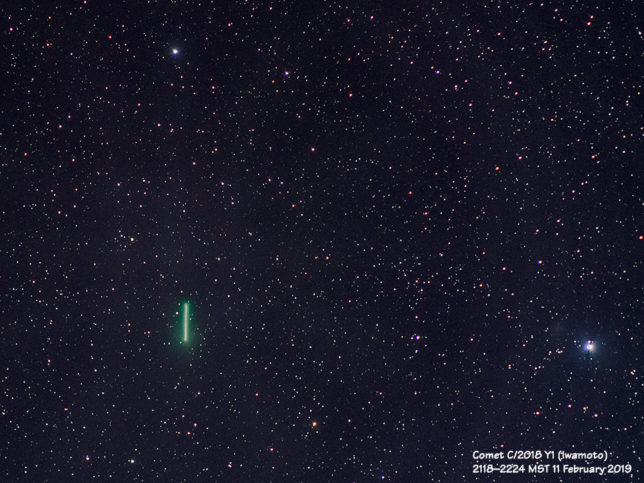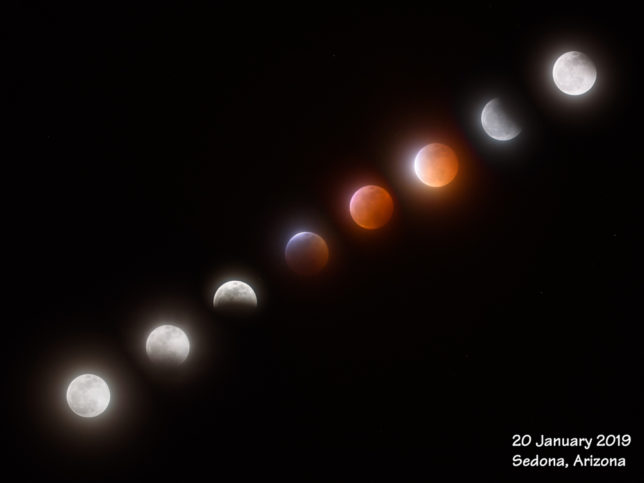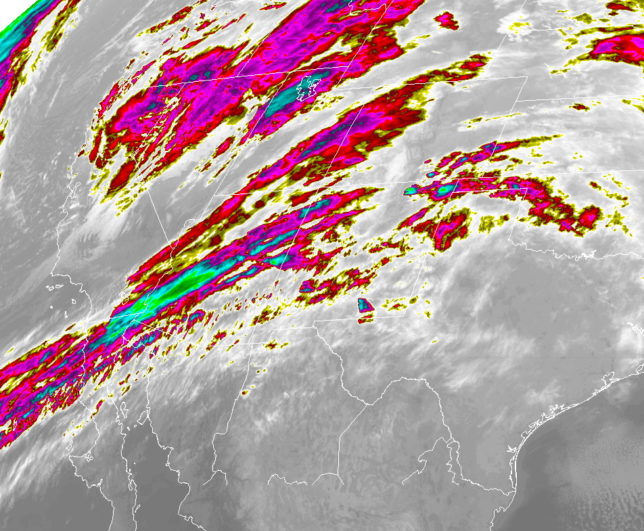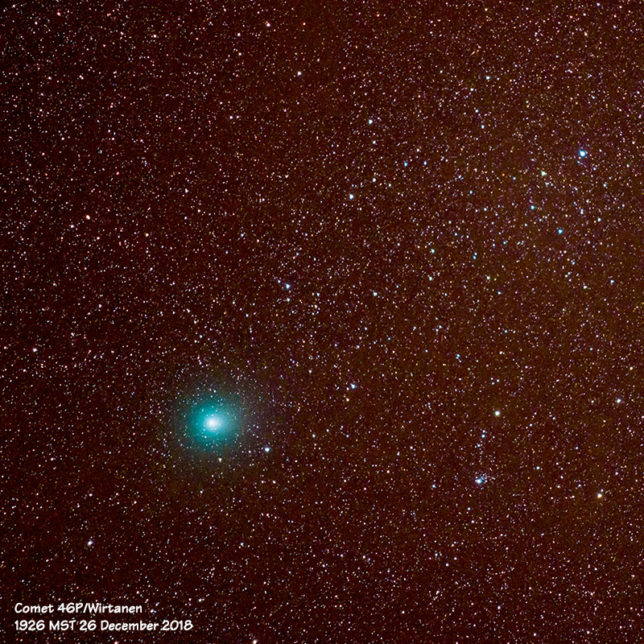It’s that time of year when the Milky Way is visible through much of the night. It is best observed when there is no Moon in the sky—and from very dark skies away from areas of light pollution. I wanted to capture both the Milky Way in a very dark sky and to capture Moonlight gently lighting up the still partially snow-covered mountains. So I headed out to Kendrick Park for some midnight sky photography.
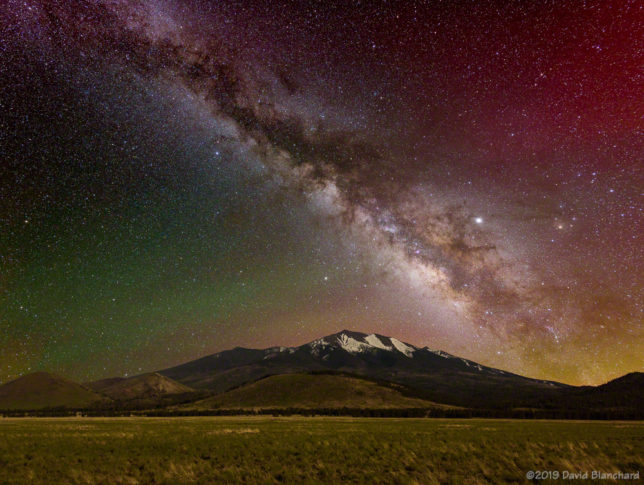
The result is this composite of two images. The first was taken of the San Francisco Peaks as the moon was low in the west at around 1118 MST. This was a bit more than an hour before moonset (0030 MST). An exposure of 300 seconds at ISO 800 and an aperture of f/8 was used.
The second image was taken at 0047 MST shortly after the moon had set allowing the fainter stars in the night sky to appear. This image was also 300 seconds at ISO 800 and an aperture of f/5.6. To prevent streaking of the stars an iOptron Sky Tracker was used. The two images were then blended together.
This is similar to images taken in the past of Cathedral Rock and Wukoki Pueblo with the Milky Way rising above. Also present low in the photograph is airglow (or nightglow).
Last week the two-day old crescent Moon (only 3.7% directly illuminated) provided a photo opportunity as it set over Upper Lake Mary. During the months of May, June, and July, the thin crescent Moon lines up with the long axis of Upper Lake Mary. This results in nice reflections of the Moon on the waters of the lake—but only if there is little or no wind. A bonus this month was the small planet Mercury was also setting in the northwest.
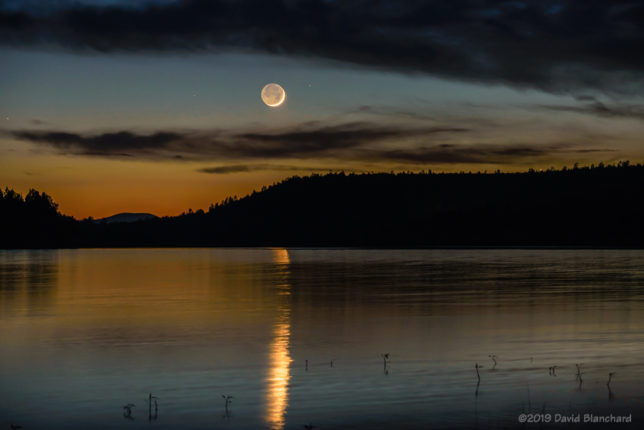
The image also shows the unlit part of the crescent Moon illuminated with Earthshine, also known as Da Vinci Glow. Yes, that Leonardo Da Vinci. Mercury can be seen just above the treetops on the far right side of the image.
